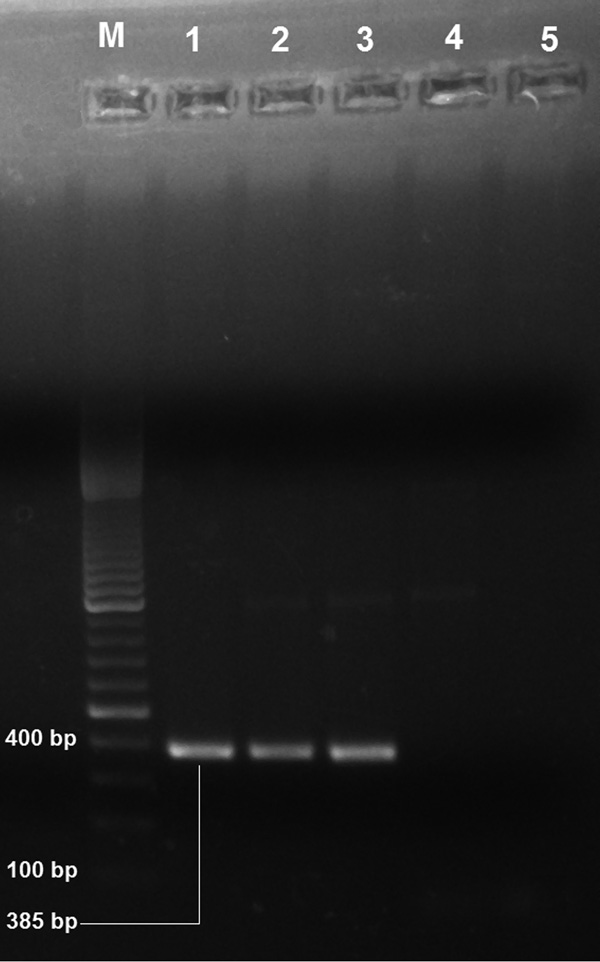Volume 20, Number 3—March 2014
Letter
Kala-azar and Post–Kala-azar Dermal Leishmaniasis, Assam, India
Figure

Figure. . Electrophoretogram of Leishmania donovani kinetoplast DNA-specific PCR products (385 bp) isolated from patients with suspected post–kala-azar dermal leishmaniasis, Assam, India. Lane M, 100-bp DNA ladder; lanes 1–4, suspected post–kala-azar dermal leishmaniasis case-patients; lane 5, negative control. PCR products were visualized by staining with ethidium bromide after electrophoresis in 1% agarose gel.
Page created: February 19, 2014
Page updated: February 19, 2014
Page reviewed: February 19, 2014
The conclusions, findings, and opinions expressed by authors contributing to this journal do not necessarily reflect the official position of the U.S. Department of Health and Human Services, the Public Health Service, the Centers for Disease Control and Prevention, or the authors' affiliated institutions. Use of trade names is for identification only and does not imply endorsement by any of the groups named above.